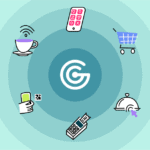Email Marketing vs Facebook: Which Is The Better Way To Market?
You don’t need us to tell you that email marketing has huge reach. At the same time, you’ll also know that Facebook and other social media sites are a great way to market your business too. But when it comes to email marketing vs. Facebook, where should you be investing your time, and where are you likely to get the best ROI?
Benefits of Email Marketing
No matter how great your content is, posting on Instagram, Facebook, or Snapchat is rarely enough to sell coffee, beer, fries, or burgers. Social media can be fickle: algorithms change, engagement drops, platforms prioritize “pay to play” businesses who use advertisements, and users are forever replacing “older” platforms for newer ones (TikTok, anyone?!)
When it comes to ROI and driving revenue for your business, email marketing is where the magic is. Email marketing is cheap, and it’s easy to personalize messages for your customers. Using email, you can monitor engagement, track your results, and generally enjoy better ROI than you would on social media. And last but not least, you own your email list, whereas social media is a place where you effectively “rent” space. If you’re blocked, hacked, or the platform goes down, you’ve lost a valuable way to connect with customers. With email marketing, this is much less likely to happen because you have complete ownership of your list data.

When Is Email Marketing Most Effective?
Not every marketing channel will be equally effective in all circumstances.
For example, social media is an excellent medium for building brand awareness and sharing more about your restaurant brand. Audiences want to be entertained, informed, or educated, and they’re usually looking for quick, easily consumable content. However, social media isn’t always the best place for “hard sell” or sharing promotions: your audience is likely looking for light entertainment and connecting with brands they like, but they aren’t necessarily looking to buy. On the other hand, email marketing is great for building customer relationships, creating engaging and personalized offers, and driving sales.
Email is a much more personal medium. Your customers are likely to view email as a place they interact and catch up with trusted brands they want to buy from; there is often a high level of awareness and purchase intent. Your audience will likely be happy (and they will even expect) to receive personalized offers and promotions. In other words? Your audience is more open to being “sold to” via email.
Social media is great for building awareness of your brand, sharing news and updates, and letting people know about your business and your brand. Growing the number of your followers, directing traffic to your website, encouraging app downloads, and getting sign-ups for your email list are some perfect goals for social media. Email is ideal for sharing promotional content and sending offers that drive sales and help you grow revenue.
“Understanding real-life engagement and connecting with our customers online and in their inbox were our biggest customer engagement gaps. We're smarter mall operators thanks to GoGoGuest."
Mark Harvey, Creative Manager, Edley's BBQ Tweet
Benefits of Facebook Marketing
People talk about Facebook being “over,” but the reality is that it’s still a very popular social media platform. It offers some great benefits for restaurant-type businesses. If you’re an owner or marketer looking to promote your business, Facebook is still worth considering.
For example, it’s easy to reach lots of potential customers with posts and content on Facebook. You can also build a community around your brand and easily communicate with customers and potential customers on the platform. Advertisements are an easy and relatively cost-effective way to reach new audiences, and Facebook’s retargeting tools can be very useful.
"Email marketers are sending 27% more emails than they then did pre-coronavirus."
HUBSPOT Tweet
When Email Marketing is Most Effective?
Email marketing also offers a lot of advantages for restaurant-type businesses.
You may find it’s easier to get better engagement through email than it is on social media. You’ll also be able to personalize offers. By segmenting your list, you can add more value for individuals or groups of similar customers with tailored promotions and communications.
Email marketing is also a great way to drive website traffic and app downloads, and in many cases, you can push for a sale through email. Comparatively, Facebook and other social media marketing is likely to be more centered on reaching new audiences and building brand awareness, thus making it harder to push revenue.
How Is Email Marketing Better Than Facebook In Many Ways
By now, you’ll have seen that email marketing vs. Facebook is actually quite nuanced: both mediums have advantages, and you can use them very successfully. That said, email marketing does trump social media platforms and Facebook in a few different ways. Let’s dive into what these benefits are:
Active Users
We’ve all seen social media accounts with thousands of followers but with little engagement, and we know that’s not great in terms of driving sales and revenue. Businesses that use email marketing tend to have more engaged and active lists of customers who are interested in your products, who want to buy from you, and who are interested in receiving your offers and promotions.
Your messages also need to be broad on social media: you have to communicate the same information to all your followers. In email marketing, you can segment your list and double down on the promotions that will appeal most to different groups.
Even if people on your email list don’t engage with your email content or your emails don’t convert, you will have more control of increasing engagement with email. You can send re-engagement sequences, tempt them with special offers, or send them different messages or communications.
Reach
Social media platforms can limit the reach of your posts, and sometimes very few of your followers will see the content you post. How the reach is determined is often complex and hard to understand: each social media platform has its own algorithms which can affect how many people see your posts.
In comparison, there’s no limit on reach in email marketing; everyone on your list will receive your email. Sure, there will be a few “bounces,” or sometimes the email will end up in the junk folder, but you’ll usually be ending up right where you want to be: in your customers’ inboxes.

Vanity Metrics
It’s easy to get excited about the wrong things on Facebook. Likes and views are great, but they are often called vanity metrics for a reason – if they’re not helping drive revenue, they’re not worth much. The trouble with social media is it’s sometimes difficult to know what your engagement means: you got 1,000 likes on your recent sundae post, but did you see an uplift in sundae sales? It’s often hard to answer.
In comparison, there are far fewer vanity metrics in email marketing. You can choose and measure goals more easily, and results tend to be concrete rather than guesswork. Email also lets you test, adapt and refine how and what you communicate. For example, you might have a low engagement rate, but it’s usually fixable if you work on content, design, offers, testing, segmentation, and other elements.
CTR
CTR – or your click-through rate – is one of the most essential elements in your email marketing. Firstly, it’ll allow you to direct the outcome of your email marketing. For example, do you want to send people to your website, get them to use an offer or promo you’re sending, or get them to download your app? Your CTR will help you measure how well you achieve your goal.
Your CTR will also provide you with deeper insights into your customers. A good CTR will show if your email list especially liked your content, offer, or news. A poor CTR will highlight less interest or engagement in what you’re sending out. You can use your CTR to test and refine your email content and strategy.
Scope Of Personalization
Customers care about the little things when it comes to personalization. As we mentioned earlier, Facebook only allows for generic messaging to a mass audience (i.e. all your followers). Using email marketing, you can personalize your message and offers. Whether you are selling in-store or online, they will all appreciate personalized recommendations and promotions that add value and improve their customer experience.
Actionable Email Marketing For Quick Service Brands
Posting on Instagram, Facebook, or TikTok is a part of the marketing puzzle, but it’s usually not enough to drive substantial sales. Email marketing is an essential part of your marketing strategy, and it’s also one that will deliver great ROI and convert likes into orders.
Here’s an example of how GoGoGuest can help deliver actionable email marketing for restaurant-type businesses:
Edley’s BBQ is the home of Nashville-style barbeque. Over the last decade, the Nashville market has proven to be a recognized contender in the barbeque market. Fans from all over the country are flocking around Nashville for its music and smoked meats.
When GoGoGuest were first engaged by Edley’s, the main objective was focusing on customer acquisition across their store locations in middle Tennessee. By installing GoGoGuest WiFi marketing in each location, the Edley’s marketing team gained access and ownership to first-party data. This included email addresses. By capturing data from their guest WiFi, Edley’s BBQ owns the customer experience across all its channels.
Here Are The Benefits Of Email Marketing For Local Brands
- GoGoGuest WiFi marketing installation in each storefront comes with premium email marketing tools. It was then easy for the Edley’s team to create and send automated email marketing messages driven by customer behavior
- Customer segmentation is rules-based. As a result, it’s effortless and quick to organize content for each customer group and cohort
- Triggered emails or marketing automation focused on food and beverage pairings lift awareness and conversion from campaign to ordering channel by 80%
- Email marketing was an essential strategy for Edley’s BBQ to remain relevant in their local market, by driving online orders at the beginning of the COVID-19 pandemic and beyond

Access And Ownership Of First Party Data
If you work with us, you’ll learn pretty quickly how much we love data. We are passionate about understanding and bridging your data gaps while understanding your most profitable engagement and ordering channels.
Here are the key benefits of first-party data for your email marketing strategy:
- Eliminate the guesswork. You can tie purchase and historical data to how, what, and when you communicate with the different customer groups that you attract as a brand
- Aggregate, organize and understand all your data. (And by all data, we really do mean all data…think POS, WiFi, online ordering, eCommerce, and other third-party apps!)
- Profitable engagement by ordering channel. Allocate what resources according to your best-performing ordering channel
Listen To Your Data And Discover Insights
Now when you’ve aggregated your first-party data from across different systems, what’s next? At this stage, you’ll get valuable insights about your customer cohorts with demographic data and actual purchase data from all your ordering channels. From there, you can implement a highly effective email marketing strategy.
Here are the key benefits of a data-driven email marketing strategy:
- Personalization to improve customer interactions. Customers care about the little things when it comes to personalization. Being able to personalize when you reach out, what you say, and how you deliver your message will be very powerful
- Email marketing for all your digital and ordering channels. It does not matter if customers are selling in-store or ordering online – you can use one email marketing platform to communicate and engage with your customers
- Tailor one campaign across customer groups with content specific for each customer segment
- Listen to your data and iterate
Start Your Email Marketing Program
Getting started is not easy, especially if you’ve been told that email marketing is no longer relevant. Contrary to “hearsay,” email marketing remains even more important than any other channel for brands of all sizes. Starting small, then working your way up to bigger email marketing goals is always a good idea.
What’s next? GoGoGuest comes in as a source for email marketing for your brand or business.
We will:
- Aggregate all your customer data in one place from across your digital and ordering channels.
- Organize your customers by segments or cohorts
- Use your data to drive personalized email marketing smart automation and tailored campaigns
- Create and send automated email campaigns driven by behavior.
- Glean insights to improve your subsequent email marketing campaigns
Next Steps
Are you looking for an easy solution to help support your customer acquisition and email marketing strategy in-store and online? We can help. It takes 5 seconds to book a consultation.





